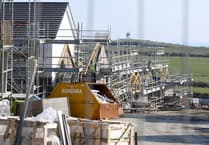The inflation rate in the island has continued to fell.
August saw a 0.4% rate decrease on the month prior with the inflation rate standing at 5.4%, measured by the consumer price index, down from 5.8% in July.
Inflation measures the annual increase in the cost of living, expressed through the prices paid for goods and services by an average household.
High inflation affects the affordability of goods and services for households.
In the past 12 months, the categories that saw the largest increases were electricity with an increased rate of 34.8%, pork at 31.6%, eggs at 30.5%, other travel costs at 27.6%, butter at 25.3% and biscuits and cakes at 24.1%.
The categories with the largest percentage decrease in comparison to 12 months prior, were oils and other fuels which declined by 22.6%, petrol and oil at –17.4%, gas at -12.2%, air travel at –8.3%, oils and fats at –4.5% and women’s outerwear –3.2%.
Out of the 12 categories measured, the only category that has seen a decline in inflation rate in the past 12 months was education at -9.9%.
The categories with the highest increases were food and non-alcoholic beverages with a rate increase of 14%, followed by restaurants and hotels with a13.4% increase, alcoholic beverages and tobacco with a 9.2% rise and recreation and culture saw a 7.5% rate increase.
In the last 12 months, it was August 2022 that had the highest inflation rate with 10.4%.
In 2023, the month with the highest rate of inflation was March with 9.1%, which month-on-month has steadily fallen since.
You can find the full inflation report on the government’s website under Statistics Isle of Man.


-(1).jpeg?width=209&height=140&crop=209:145,smart&quality=75)
-(1).jpeg?width=209&height=140&crop=209:145,smart&quality=75)
.jpg?width=209&height=140&crop=209:145,smart&quality=75)
Comments
This article has no comments yet. Be the first to leave a comment.